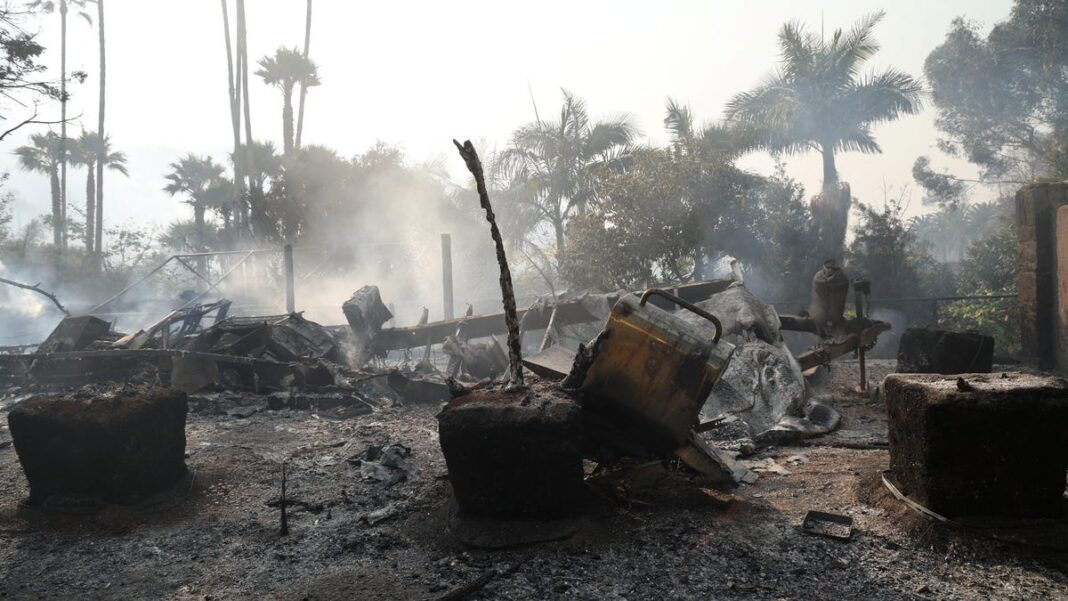Santa Ana Winds Intensify Franklin Fire. Here’s How They Function.
Santa Ana winds, infamous for causing havoc each year in Southern California, are contributing to the destructive Franklin wildfire in Malibu, which has scorched nearly 4,000 acres this week.
Typically occurring in fall and winter, these winds push dry air from California’s inland deserts toward the coastline, according to the National Weather Service.
As explained by meteorologist Jan Null from Golden Gate Weather Services, these winds arise when high pressure develops over the Great Basin, situated east of the Sierra Nevada. The winds travel over the mountains separating the deserts from coastal California, and as they descend, they are compressed and heat up.
Low Humidity Enhances Fire Risk
As the air heats up, its humidity level drops, often reaching under 20%, or even below 10%. This low humidity dries out plants, making them more flammable.
“No other region experiences such winds, which can affect so many people with such intensity, causing extensive damage,” noted the National Weather Service.
Many of the winds descending from California’s mountains are named based on their region. For instance, aside from the Santa Ana winds in Southern California, the northern part of the state has Diablo winds, which flow through the Diablo Range located east of the San Francisco Bay.
Red Flag Warnings Issued
This latest surge of strong Santa Ana winds and dry weather has led the National Weather Service to issue a red flag warning across parts of Southern California. These warnings signify perilous weather that could ignite wildfires and lead to unpredictable spreading. Fire departments typically increase staffing levels when these warnings are active.
Extended Fire Season in California
Even though wildfires fueled by Santa Ana winds are a natural occurrence in California, experts from CalFire indicate that the state’s fire season, along with that of the entire West region, is starting earlier and lasting longer.
CalFire attributes this change to climate change, with rising spring and summer temperatures, decreased snow levels, and earlier snowmelt contributing to lengthier and harsher dry spells. This stresses vegetation and increases the vulnerability of forests to severe wildfires.

